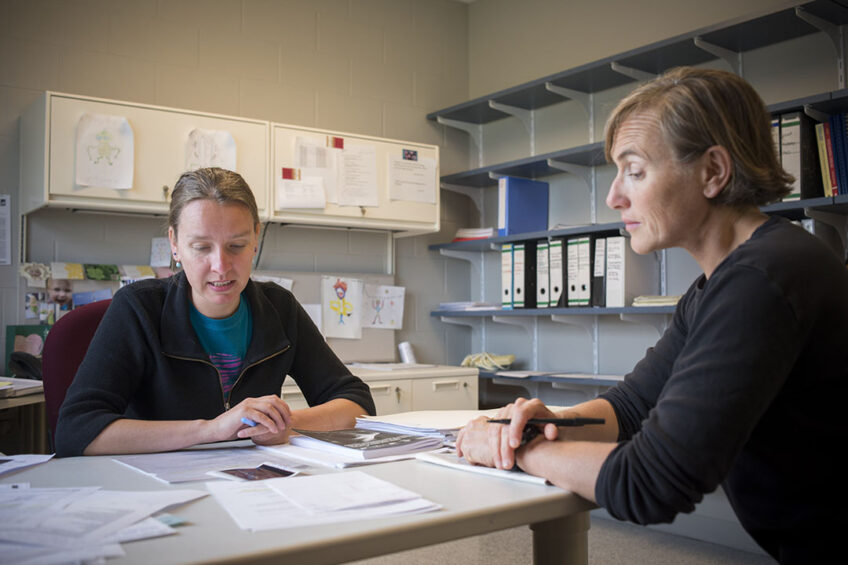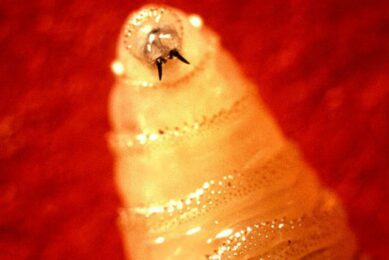A cure for mastitis?

A revolutionary new treatment approach is being developed in New York. We take a look at the novel approach generating a lot of excitement in the sector.
An effective treatment for mastitis seems like the holy grail in dairy farming. In dairy farms around the world, this condition is common and serious, affecting cow health, milk production and, of course, farm profits. “During the last century, significant advances to control mastitis have been made,” explain scientists at the ICAR-Indian Veterinary Research Institute in India, who published a new overview of these advances in February 2021. However, they add that “changing population dynamics, herd structure and more rigorous processor standards make mastitis a complicated disease”, and it “remains a foremost problem of the dairy industry”.
These scientists reviewed approaches to control and treat mastitis, including genetic selection, nutrition (feeding antioxidants, trace minerals, specific vitamins) and either dry cow therapy or lactation therapy (antibiotics during the dry period or during lactation). Other treatments, such as internal teat sealants in combination with antibiotics, have also shown some success in treating the disease. Acoustic pulse therapy represents a promising new approach.
‘Need of this century’
By and large, however, it is antibiotics that veterinarians and dairy farmers have historically relied on to treat mastitis – and they still do. But while antibiotics do work, any treated cow must be taken out of the milking pool for a period of time to prevent contamination of the milk supply with antibiotic residues. Antibiotics also do nothing to repair the tissue damage caused by the infection.
And with bacterial resistance to antibiotics growing each year, it is critical that a new solution be found to treat mastitis. Indeed, the Indian scientists say, “A universal therapeutic agent or technique that can be considered as a replacement for antibiotic therapy is the need of this century.”

Novel approach
Just such a potential replacement for antibiotics to treat mastitis is being developed by Dr Gerlinde Van de Walle at the Baker Institute for Animal Health at Cornell University in New York, US, with colleagues. This approach is generating a lot of excitement, not just for its potential to replace or augment antibiotics, but also because it is a natural treatment, derived from the cow’s body itself.
In brief, Van de Walle and her team are exploring how compounds secreted by bovine mammary tissue stem cells can be used to kill the bacteria that causes mastitis. These compounds have also been shown to heal the mammary gland tissue damage that the pathogens cause during the infection. This is very exciting because it could allow milk production levels to rebound, perhaps even to the levels from before the infection occurred. The approach is also gaining intense interest because it may be applicable to other diseases as well.
The research is being carried out collaboratively with animal health company Elanco. Funding for the research is being provided by Elanco, the Foundation for Food and Agriculture Research (FFAR) and the New York Farm Viability Institute (NYFVI), a non-profit organisation that supports research to make farms in the state more profitable.
Of the new research, NYFVI executive director David Grusenmeyer recently stated in the Cornell Chronicle, “This is probably the most novel treatment approach for mastitis I have seen in my career.”
2 other dairy projects
The NYFVI is currently also funding 2 other dairy projects. One is assisting producers to use the automated pre-milking stimulation available with conventional parlor milking systems (and used widely in other countries). The other is the development of MyCow$ , a novel tool to improve dairy farm business decision-making through real time estimation of profitability. Both projects also involve researchers at Cornell University.

Origins of the current research
In a study that was published in 2018, Van de Walle and Dr Daryl Nydam, a professor in population medicine and diagnostic sciences at Cornell, had investigated the bovine mammary “secretome” – that is, all the compounds secreted from adult stem cells in mammary tissue. They discovered the secretome could kill bacteria and prevent damage from bacterial toxins. Compounds in the secretome were also found to promote healing through “the growth of blood vessels and recruitments of new cells”.
In addition, the team discovered that the secretome had more effectiveness against toxins produced by gram-negative bacteria. This may be important in terms of the secretome approach as a complement to antibiotic therapy (if not a complete replacement). That is, both gram-positive and gram-negative bacteria can cause mastitis, but the antibiotics currently approved in the US are more effective against gram-positive bacteria.
Bioactive factors
Van de Walle notes that over the past several years, interest has been increasing in the bioactive factors secreted by human stem cells. But she says, “There was not that much known about bioactive factors secreted by stem cells from domesticated veterinary animals. Especially when it was found that stem cell–secreted bioactive factors also have antimicrobial properties in addition to regenerative and immunomodulatory properties, this really opens up an exciting new avenue of exploration of these stem cells secretes for many diseases.”

Van de Walle’s group has also studied the secretome of stem cells in horses, pigs and chickens (research not yet published). In 2018, Dr Lucas Huntimer, a senior advisor for external innovation at Elanco, reached out to Van de Walle after reading the research paper. That year, as reported earlier this year, Huntimer suggested to Van de Walle that she should seek funding from FFAR, a non-profit organisation that funds agricultural research through public–private partnerships. Because funding applications require equal contributions from research partners, Elanco offered financial support. As part of the project, Huntimer, his colleague Dr Leane Oliveira and their team will be performing the in-cow experiments at Elanco facilities.
Current experiments
Van de Walle notes that the secretome is a rich mixture of many different components that have different activities. “We will first start with the secretome as a whole and we can then work from there to identify which components are present, by using analyses such as proteomics, metabolomics, etc.,” she says, “and confirm which of these components have a bioactive effect in vitro in the lab first, and then eventually explore their effects in cows as well.”
When ready, the team plans to treat cows with mastitis using the whole secretome and perhaps different components of the secretome; it’s not known yet how difficult it may be to isolate various components. This will eventually allow the scientists to pinpoint exactly which compounds are responsible, for example, for beneficial effects, at what concentrations and alone or in mixtures.
Isolating the secreted compounds from the stem cells directly or synthesising specific bioactive factors are definitely possibilities
Cows will be observed for beneficial effects such as signs of healing and regeneration of the mammary tissue, changes in the immune system that may help fight a mastitis infection and hopefully also higher milk production. However, even though she and others have done research with other species, Van de Walle cannot yet speculate on how strong the beneficial effects will be.
In terms of the dairy cattle breeds being used in these trials, Van de Walle says, “We will focus on Holstein-Friesian first, but if we find encouraging results, we can expand to others.”
Should the treatment prove effective and the development of a commercialised treatment product ensue, stem cells would need to be grown on a large scale. In addition, efficient methods of obtaining the secretome will need to be created, along with a way to segregate individual components as required. “There are many options to explore,” says Van de Walle. “Isolating the secreted compounds from the stem cells directly or synthesising specific bioactive factors are definitely possibilities. The main factor when thinking about commercialisation is that we will have to deliver a product that is cost effective and economically affordable, comparable in price to what is currently available on the market.”

Looking to the future
Looking forward, in their review of mastitis approaches, the scientists at the ICAR-Indian Veterinary Research Institute call for further research into advanced therapeutic strategies to treat mastitis, like bacteriocins and nanoparticle technology. Furthermore, they stress that “diagnostic techniques and treatment modalities should be developed hand-in-hand so that early farm-level diagnosis can be made accurately, which then can be combined with specific therapy.”
In terms of diagnostic advances, a new approach is being investigated by the Institute for Global Food Security at Queen’s University Belfast in Ireland, in partnership with AgriSearch and the Agri-Food & Biosciences Institute. It will involve the use of mass spectrometry to develop a rapid diagnosis method using a suspected milk sample. The method could potentially be developed into an on-site test, which would allow faster treatment and cow recovery.
Join 13,000+ subscribers
Subscribe to our newsletter to stay updated about all the need-to-know content in the dairy sector, two times a week.










